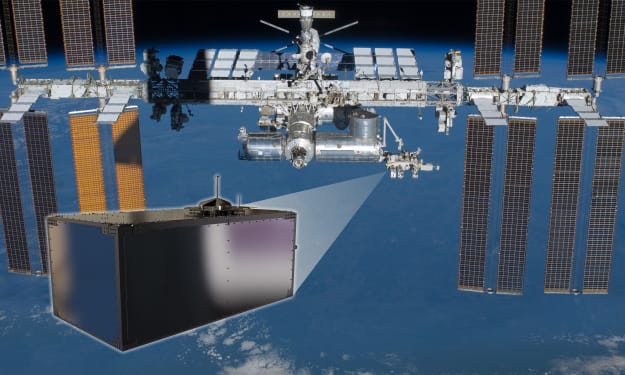NASA Says Good-Bye to the Cassini Saturn Orbiter
On September 15, 2017, the Cassini spacecraft will plunge to Saturn's surface in a suicide mission.

On September 15, 2017, the Cassini-Huygens mission to Saturn will culminate in a dramatic and fiery collision with the planet's upper atmosphere. NASA, the European Space Agency, and the Italian Space Agency teamed up for the groundbreaking mission that has changed what we know about planetary science and space travel itself.
Cassini - The Grand Finale

Artist's conception of Cassini orbiting Saturn
Credit: NASA/JPL-Caltech
Cassini's suicide plunge actually began in April 2017 with a series of 22 orbits that passed between the surface of Saturn and its two outermost rings. The final pass was successfully performed on September 9. The last orbit sets it on a collision course with the planet's upper atmosphere, where it will burn away like a shooting star. The idea was to use up every last drop of its remaining fuel before the spectacular send off.
Why destroy the valuable spacecraft? Cassini left adrift after its rocket fuel is spent could collide with one of the moons, and scientists were concerned about possible contamination, especially when one or more of the moons seem to have the ingredients to support life. Destroying Cassini will ensure the moons and the planet's surface are kept in pristine condition.
The Cassini mission, in many respects, has pioneered planetary missions and space exploration in a larger sense. Launched on October 15, 1997, the international project reached Saturn in 2004, and has been providing an unprecedented close-up look at the mysterious ringed planet and its string of moons in the outer solar system since then. The Cassini-Huygens probe was successfully landed on Titan in 2005. It was the first time a space landing had been performed on a planet in the outer solar system.
Cassini's initial four-year mission has been extended twice. Since 2010, Cassini has performed multiple moon flybys, including 127 of Titan alone, and has observed phenomena such as the changing of seasons on Saturn and its moon Titan. Cassini has observed about half a year on Saturn, a full year being about the equivalent of 29 years back here on Earth.
Saturn's Intriguing Moons

Enceladus.Image taken by the Cassini spacecraft narrow-angle camera on Aug. 1, 2017 using filters that allow infrared, green, and ultraviolet light.
Image credit: NASA/JPL-Caltech/Space Science Institute
Among the most exciting of Cassini's discoveries has been the intriguing Enceladus, the frozen ocean moon, where Cassini shocked astrophysicists when it observed jets of icy liquid shooting out from the surface. On Titan, the largest of Saturn's moons, the hydrocarbon lakes and pre-biotic chemistry give it intriguing possibilities when it comes to extraterrestrial life.
Probing the possibilities that some forms of life may exist in the liquid chemical soup underneath the frozen crust of tiny Enceladus' surface, or in the Earth-like geology of Titan, has led to a deeper understanding of the kinds of places that life as we know it could potentially develop.
An Engineering Marvel

In this screenshot from the short animated film Cassini's Grand Finale, the spacecraft is shown breaking apart after entering Saturn's atmosphere. The planned end of Cassini will occur on Sept. 15, 2017.
Credit: NASA/JPL-Caltech
Along with scientific discoveries and understanding, the Cassini spacecraft represents a real triumph of engineering and technology. NASA engineers used the trajectory of the moons in order to fine tune Cassini's path in and around Saturn. The field is known as "astrodynamicists" and uses physics and mathematics to calculate and then program spacecraft into complex maneuvers such as Cassini's last 22 daredevil probes in and out of the gaps between Saturn's rings.
Just to put it into perspective, nearly 20 years after its launch, the team has set Cassini on a series of 22 dives through a gap between rings F and G that is about 1,200 miles wide, at an altitude that reaches as close as 1,000 miles above Saturn's surface. They began the last series of moves after a last flyby of Titan, using the moon's gravity to accurately swing the spacecraft into the right path.
Cassini will be sending images and data right up until a few hours before it immolates in Saturn's upper atmosphere, including brand new data on the planet's atmosphere and the composition of its rings.
Bravo, Cassini, and farewell. You can follow its last week of activity right up to September 14 at https://saturn.jpl.nasa.gov/mission/grand-finale/cassini-end-of-mission-timeline/.
About the Creator
Anya Wassenberg
I'm a long time freelance writer of both fiction and non-fiction.






Comments
There are no comments for this story
Be the first to respond and start the conversation.